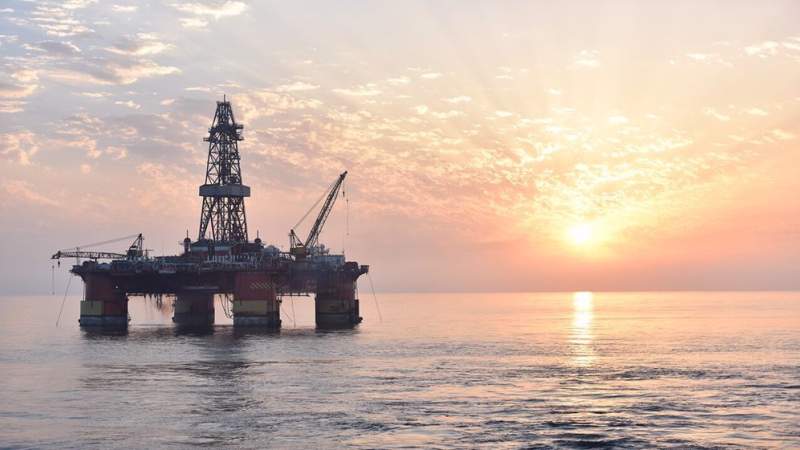Caspian Drilling Heralds a Transformation in Iran’s Energy landscape

News- Middle East: Earlier this month, Iran started drilling for oil in the Caspian Sea after a halt of such activities for nearly three decades due to technical, financial, and logistical challenges.
This is a major step towards further strengthening the country's oil and gas industry, demonstrating Iran's technical and engineering capabilities and self-sufficiency in this field.
A drilling rig was mobilized to site in shallow waters of Caspian block 18, located in the Roudsar formation 15-km off the northern Iranian coast.
According to officials at the Ministry of Petroleum, the $50 million drilling started from 70-meter in the sea and will dig down to a 5,077-meter depth for an appraisal job.
Based on geological and seismic studies, there is probably more than 600 million barrels of crude oil and around two trillion cubic feet of gas in the block, Minister of Petroleum Mohsen Paknejad said.
Despite sitting on the world’s second-largest natural gas reserves, Iran has been importing gas from Turkmenistan since 1997 to help meet energy needs of its northern provinces which are far from the country’s hydrocarbon fields in the south.
Turkmenistan has occasionally raised gas prices for Iran during several winters, and demanded the Islamic Republic pay the balance to a tune of $1.8 billion in imported gas in 2016, leading to a legal clash between the two neighbors.
The Caspian drilling is a watershed in Iran’s self-sufficiency in energy supplies for its highly-populated northern provinces.
Iran dug the last shallow-water well in the Caspian Sea in 1997, and abandoned deep-water wells in 2014. For deep-water drilling to resume, the country needs to repair the semi-submersible Amirkabir rig.
Iran remains the only Caspian country not currently extracting oil or gas from the sea where other littoral states - Russia, Azerbaijan, Kazakhstan, and Turkmenistan - have developed significant offshore production in recent decades.
In 2023, they collectively produced over 1.2 million barrels per day of oil and 50 billion cubic meters of gas from their Caspian fields.
In recent years, Iran has turned its attention to developing unknown or underdeveloped oil fields. Given the Caspian Sea’s significance as a major oil and gas resource, the new drilling could change the roadmap of Iran's oil industry.
This body of waters is gaining increasing centrality in promoting economic connectivity between Asia and Europe as current supply chains for essential commodities face risks from the conflict in Ukraine and rising tensions in West Asia and the Red Sea.
Also as one of the most important energy sources, the Caspian Sea is attracting the attention of the Europeans for its potentials to help them diversify away from reliance on the Russian energy sector.
Moreover, Europe and other international players seek to leverage the Caspian Sea to achieve strategic objectives such as diminishing Russia’s geostrategic relevance over trans-Eurasian cargo movement and energy supplies.
For Iran, the need to diversify oil exports amid the most stringent sanctions has forced the country to seek new oil sources.
The oil and gas prospecting in the Caspian Sea demonstrates Iran's serious commitment to developing new energy infrastructure and reducing dependence on the Persian Gulf for hydrocarbon exports in the face of sanctions.
The Caspian Sea holds an estimated 46 billion barrels of proven oil reserves and 294 trillion cubic meters of natural gas reserves as of 2025.
The Rudsar structure, as one of the most prominent hydrocarbon reservoirs, could be the key to Iran’s future oil development. According to the Ministry of Petroleum, the area has high-quality reservoir rocks that could increase Iran’s oil production by 10 to 20 percent.
Oil revenues constitute the backbone of Iran's budget, up to 40 percent, with the Caspian project estimated to increase them by up to 15 percent.
Also, the sanctions have forced the Iranian government to pivot to the east for attracting investment and technological imports, most importantly Russia.
Developing Caspian fields could facilitate economic diversification and reduce geopolitical risks, besides strengthening Iran’s position in the region.
The Islamic Republic has already tried to enlist Russian energy giant Gazprom in deep drilling. The shallow-drilling in the Rudsar bloc, in fact, demonstrates Iran's technical strength and resistance to economic sanctions.
Overall, the project is being hailed as a symbol of self-sufficiency and economic resilience, not least by labor unions which see it a great opportunity for new jobs in northern Iran.
It also testifies to Iran’s technical and engineering capabilities and the transformation of energy as a diplomatic trump card in international relations.
Source: Press TV
#Iran #Caspian Sea about 4 days-
12:15
Israeli settlers attack Palestinians in Beit Ur Al-Tahta, west of Ramallah, injuring at least 7 Palestinians.
08:49
Palestinian sources: Renewed artillery shelling east of Al-Bureij camp in central Gaza
08:48
Frantz Lof: Without real improvement, Gaza’s residents will again face harsh winter conditions
08:48
Frantz Lof: Not a single health facility in Gaza is operating at full capacity
08:48
Frantz Lof: Humanitarian aid is barely arriving and is almost completely halted





